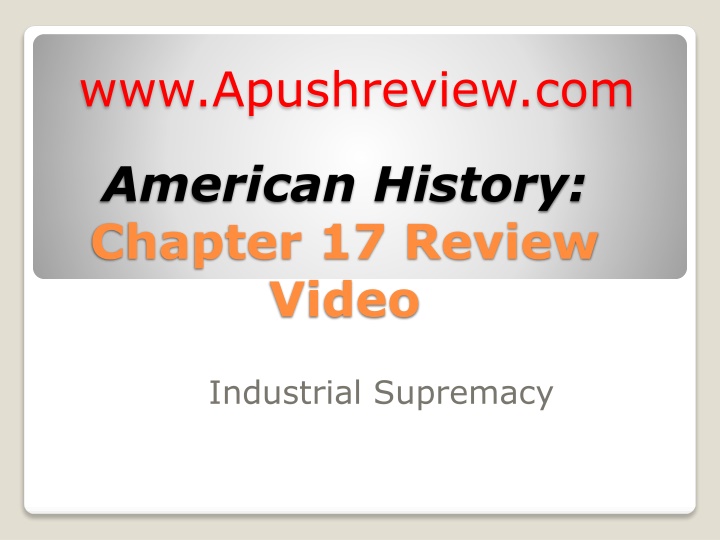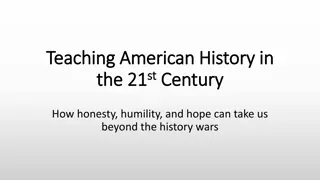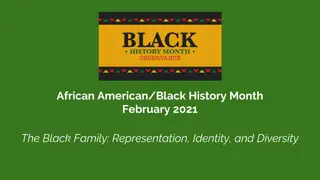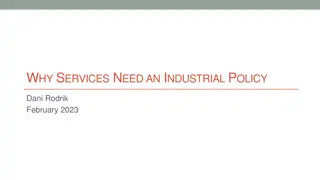Key Aspects of Industrial Growth in American History
Explore the sources of industrial growth in the United States, from the innovations of Henry Bessemer and William Kelly to the impact of figures like Henry Ford and the Wright brothers. Learn about Taylorism, Carnegie's steel empire, and concepts like horizontal and vertical integration. Delve into the contradictions of capitalism, including social Darwinism and the Gospel of Wealth.
Download Presentation

Please find below an Image/Link to download the presentation.
The content on the website is provided AS IS for your information and personal use only. It may not be sold, licensed, or shared on other websites without obtaining consent from the author.If you encounter any issues during the download, it is possible that the publisher has removed the file from their server.
You are allowed to download the files provided on this website for personal or commercial use, subject to the condition that they are used lawfully. All files are the property of their respective owners.
The content on the website is provided AS IS for your information and personal use only. It may not be sold, licensed, or shared on other websites without obtaining consent from the author.
E N D
Presentation Transcript
www.Apushreview.com American History: Chapter 17 Review Video Industrial Supremacy
Sources of Industrial Growth Henry Bessemer and William Kelly: Bessemer Process converted iron into much stronger steel Steel used in RRs, construction, etc. Steel industry booms in Ohio and PA Abundance of iron ore Oil Drake s Folly - PA Originally used in lamps Henry Ford: Made cars affordable moving assembly line Raised wages for his workers Wright brothers from OH First in flight Lindberg s flight in the 1920s boomed industry
Sources of Industrial Growth ***Taylorism*** - Frederick Taylor Subdivided tasks, each individual had a specific task Made workers interchangeable, less reliance on skilled workers RR expansion affected other industries Lumber industry cut down forests, Chicago became main hub - slaughterhouse Time zones
Sources of Industrial Growth Group of stockholders own a business Limited liability: Owners can only lose value of stock if company goes bankrupt Carnegie: Steel Pittsburgh Owned all aspects of steel production ***Horizontal Integration*** Buying businesses in a similar industry Later deemed illegal - monopolies Ex. Standard Oil ***Vertical Integration*** Owning all aspects of production Ex. Carnegie Steel Corporations:
Sources of Industrial Growth Pool arrangements: Businesses agreed to divide up markets amongst themselves later illegal Trusts: Originally had a different meaning, later associated with monopolies Holding Companies : Would buy up stocks in other companies, thus gaining more power
Capitalism and its Critics Most millionaires were not self-made Tycoons had tremendous influence: Financial contributions to politicians and parties What do I care about the law? H aint I got the power? Social Darwinism: Applied Darwin s ideas to Humans Herbert Spencer Advocated that the fittest survived Appealed to business owners justified their wealth ***Gospel of Wealth*** Written by Carnegie Wealthy should donate money for the community
Capitalism and its Critics Horatio Alger: Wrote rags to riches stories James Garfield Sold 100 million copies; Henry George Progress and Poverty Blamed monopolies for social problems Edward Bellamy s Looking Backward A man awakes in 2000 in a utopian society no want, politics and vice RRs came under attack from many groups Charged high rates especially for farmers
Industrial Workers in the New Economy Individuals moved from rural to urban areas Hoped for new economic and social opportunities Immigrants moved to cities 25 million new immigrants between 1865 and 1915: ***New Immigrants were from Southern and Eastern Europe*** Italians, Poles, Russians, Greeks, etc. Labor Contract Law: Allowed employers to recruit laborers by paying for their passage
Industrial Workers in the New Economy Working conditions: Long days 10-12 hours Machines replaced some skilled workers Factories hired more women and children Cheaper pay for unskilled work Textile industry had largest number of women
Industrial Workers in the New Economy Unions (KNOW THIS SLIDE!!) When in doubt, the government(s) and public will side with owners, not unions National Labor Union (1866): Excluded women workers, feared that it would lower wages Molly Maguires Labor organization in PA used violence Great RR Strike: RRs cut pay by 10%, Hayes ordered troops to stop the strike
Industrial Workers in the New Economy Still Know This Slide! Knights of Labor: All workers men, women, African Americans Skilled and unskilled Membership grew under Terence Powderly Hurt by the Haymarket Square Riot AFL Samuel Gompers Only accepted SKILLED workers Advocated women should remain in the home Focused on bread and butter issues Collective bargaining, rarely used strikes
Industrial Workers in the New Economy Still Know This Slide! The Homestead Strike: Carnegie and Henry Clay Frick wanted to break the union at Homestead The plant was shut down, Pinktertons were called in, after fighting, Pinkertons left Governor of PA broke up strike with National Guard Pullman Strike (1894): Pullman Palace Car Company cut wages, did not cut rent in towns American Railway Union Eugene V. Debs went on strike President Cleveland sent troops to end strike
Thanks for watching! Subscribe to my channel Help spread the word Questions? Comments? Ideas for videos? Leave in comments Have you tried my original recipe?























